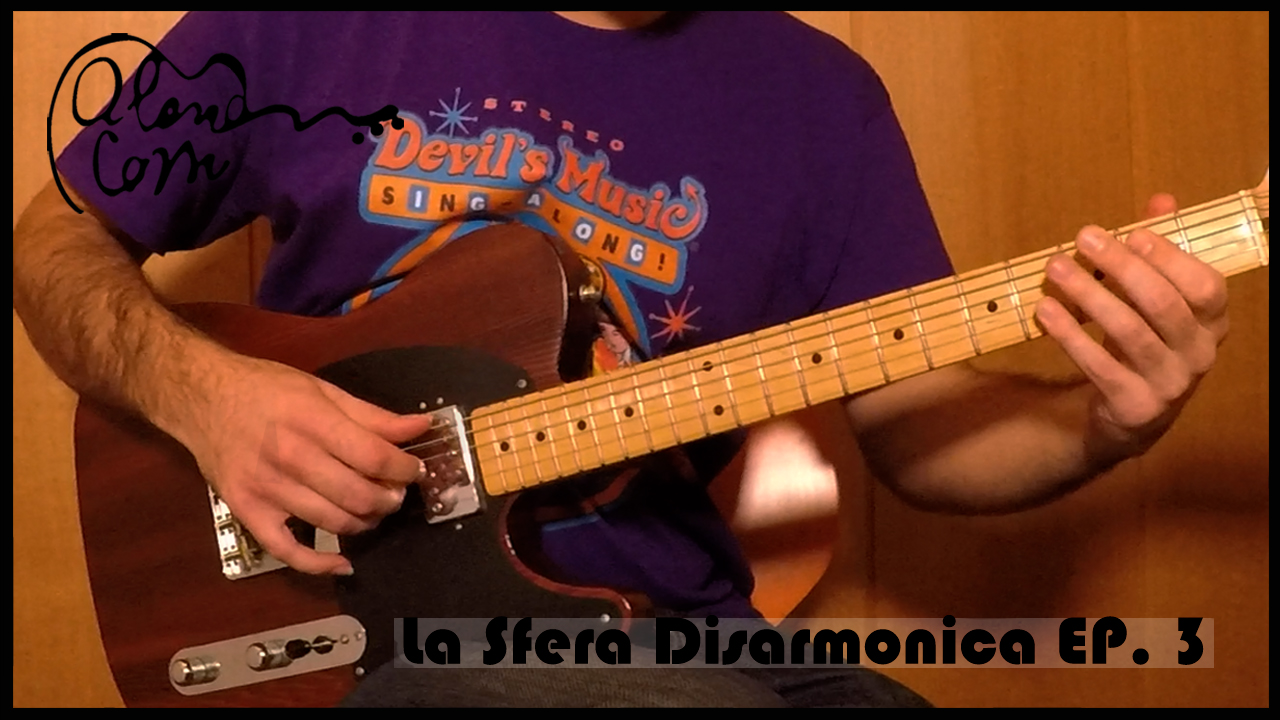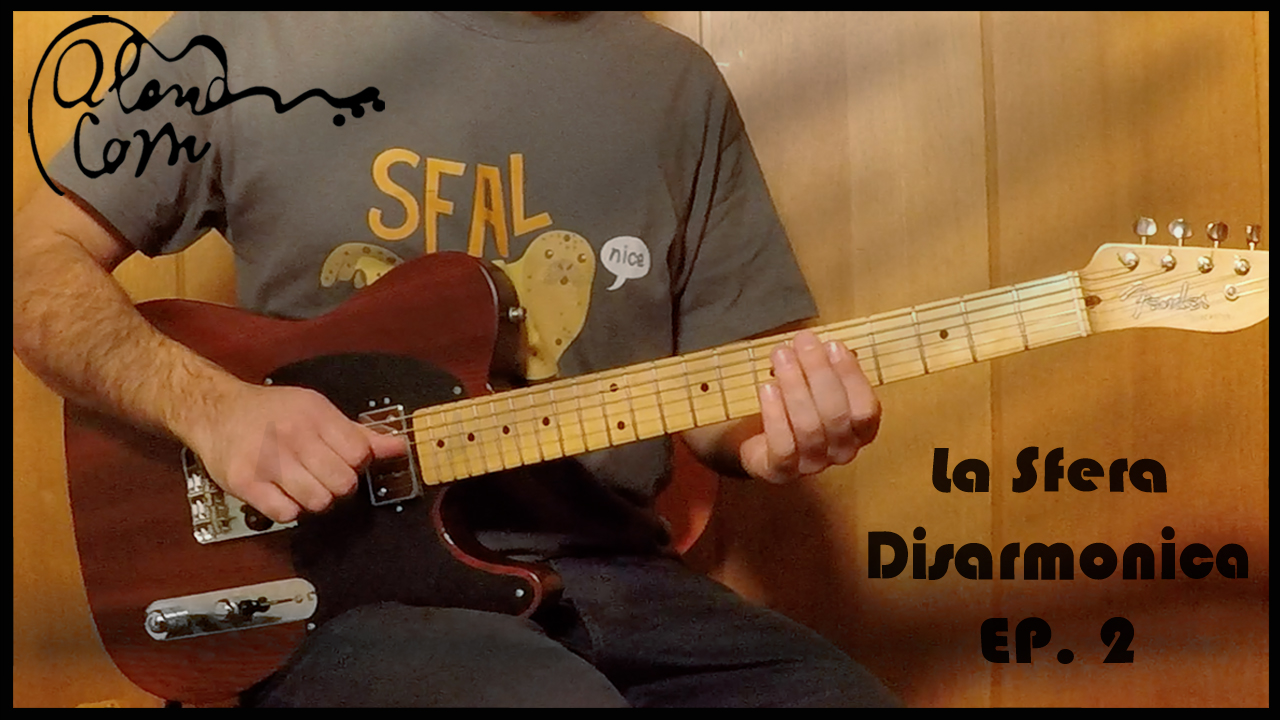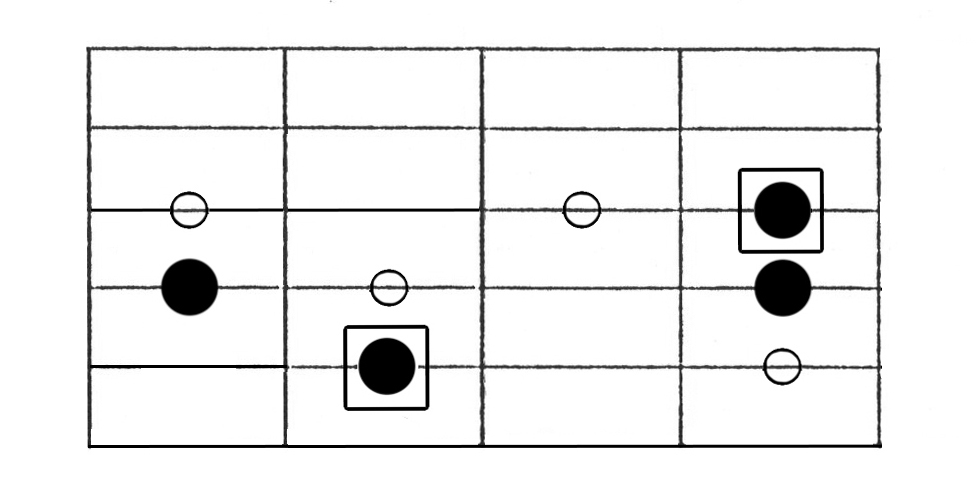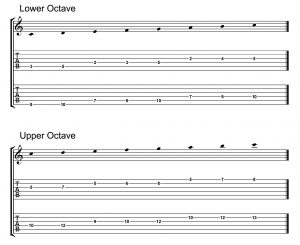
IL MODO MINORE
20 Ottobre 2018
TONAL FUNCTIONS IN THE MAJOR SCALE
21 Novembre 2018Hi everybody!
Today I’d like to talk a little bit about a subject both elementary and extremely complex: the major scale.
It is elementary in the sense that any consideration we could do on music (from a Western perspective) has to start from here. But that’s what makes it complex as well. Just think of how much tonal music has been written in 400 years and how we are not yet done!
Based on my experience as student and teacher, I’ve often felt that this topic was treated in a superficial or even misleading way. I’m thinking mostly about the electric guitar, but I’ve seen that it happens for other instruments too.
Please, Let’s Start From The Tonic!
Talking about electric guitar, I’ve noticed that many times people talking about the major scale (or any other scale) are actually just showing the fingerings for that scale on the guitar. This could lead to the idea that fingering and scale are basically the same. Probably it happened to you too to see someone showing the shapes for a scale using a bunch of different shapes (maybe using the CAGED system) always starting from the lowest note available.
Maybe you’ve asked to yourself: “Are these really the same scale? They don’t sound quite the same!”.
You’re right, they’re not the same.
Let’s take this example:

there’s no doubt that all the notes above are in C major, but playing them as they’re written definitely won’t sound as C major!
So the main point is: if you want to play a C Major scale please start and end on C!
Single-String Major Scale
When showing the major scale to someone who’s just starting to play guitar, I find very useful to make him play it on a single string.
This way everyone sees right away how a major scale is built, i.e. its specific order of tones and semitones.

This will also allow to make it easier to explain the concept of transposition later on; instead of complex or abstract explanations, just playing the same frets on a different string will give a different major scale.
Knowing a scale on a single string is also very useful for non-beginners, for example if you have to play a chord-melody.
Since the study of guitar has a strong “visual” component (that is, we have to thing of chord and scales shapes) but at the same time a note can be played in many different places around the neck, it’s essential for guitarists to develop an organized method for learning the different fingerings, while always listening and reproducing the sounds with the voice (yes, you have to sing) so that the work on the instrument isn’t purely mechanical.
Once learned the scale on one string, the following step is for me to “compact” this notes in the same position. This so they can all be played without moving the left hand from its place.
Keep It In One Octave
I usually start with this shape:

keeping it in a single octave. (Inside the squares there’s the Tonic note, while black dots are the notes of the Tonic triad and white dots the other notes of the scale)
This shape can be moved to any set of three adjacent strings, starting from the sixth, fifth, fourth or third: in the first two cases they remain exactly the same, while when placing the Tonic on the fourth or third string the shapes slightly differ because of the standard tuning of the guitar.
Anyway, the idea of having a three-strings set with 2-3-3 notes is maintained.

For practical purpose I refer now to C major, building the four shapes with the Tonic before the twelve fret, that is:

We could still go further up on the neck, starting from C on the 17th fret of the third string, on the 15th of the fifth and eventually (if you dare and your guitar allows it) on the 20th of the sixth string. I’m not considering them here since I’m simply talking about shapes and I consider them as a repetition of the formers.
Now, Be Creative!
Now, before learning more shapes it’s important to be able to use the ones we already know, which already allows us to do many things considering it embraces two whole octaves, in a musical way.
Choosing a fingering instead of another can change our playing because it changes the way notes are grouped. Being stuck with the same scale-shape every time we take our guitar could lead us to the repetition of the same licks we are most comfortable with, over and over. This makes almost impossible to actually focus on musical ideas. That’s why I prefer starting with fingerings based on the same shape, this way beginning right away to move the scale around the neck but still maintaining a recognizable shape.
If we start from a musical idea before playing it on the instrument we will eventually be able to play it without being forced to use a specific fingering and without running up and down the neck struggling to find the right notes. The choice on how to organize the notes on the strings will be only aiming to interpretation.
Guitar will finally be an instrument and not an obstacle.
But we’ll talk about this another time.
DO’S
- Study the scale on a single string;
- Study the scale in position on a single octave, starting and ending on the Tonic;
- Find the other fingerings for the same octave starting with those with the same shape (same number of notes on each string);
- Play a melody using different scale-shapes;
- Try all of the above in different tonalities.
DON’TS
- Play a scale on all strings starting and ending on notes that are not the Tonic, without recognizing the repetition in the structure of the octave;
- Thinking that a note, chord or whatever can be only played in one position;
- Play without listening to what you’re doing.


